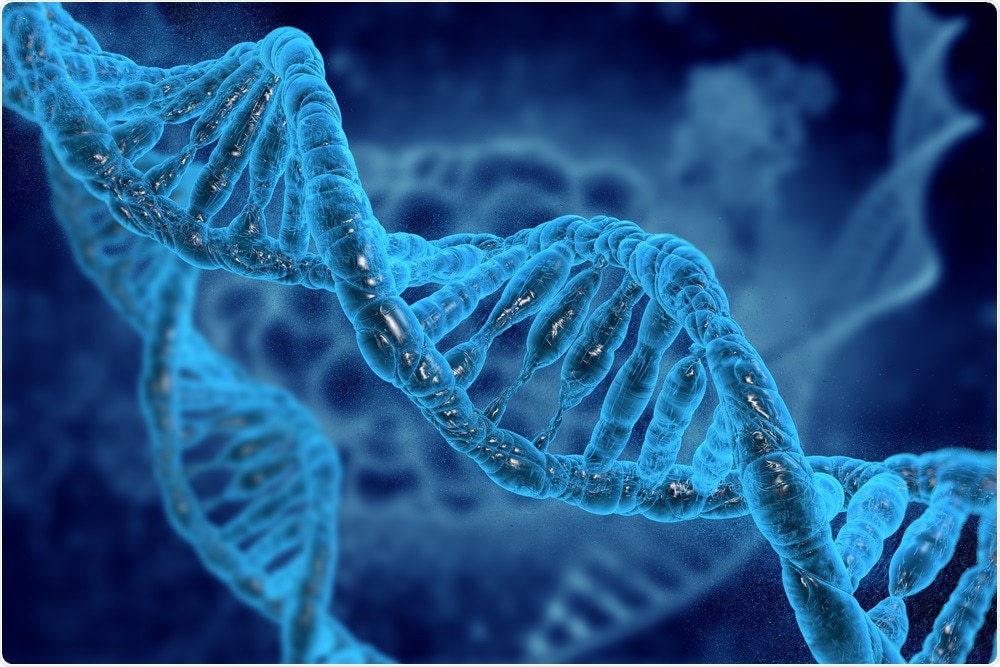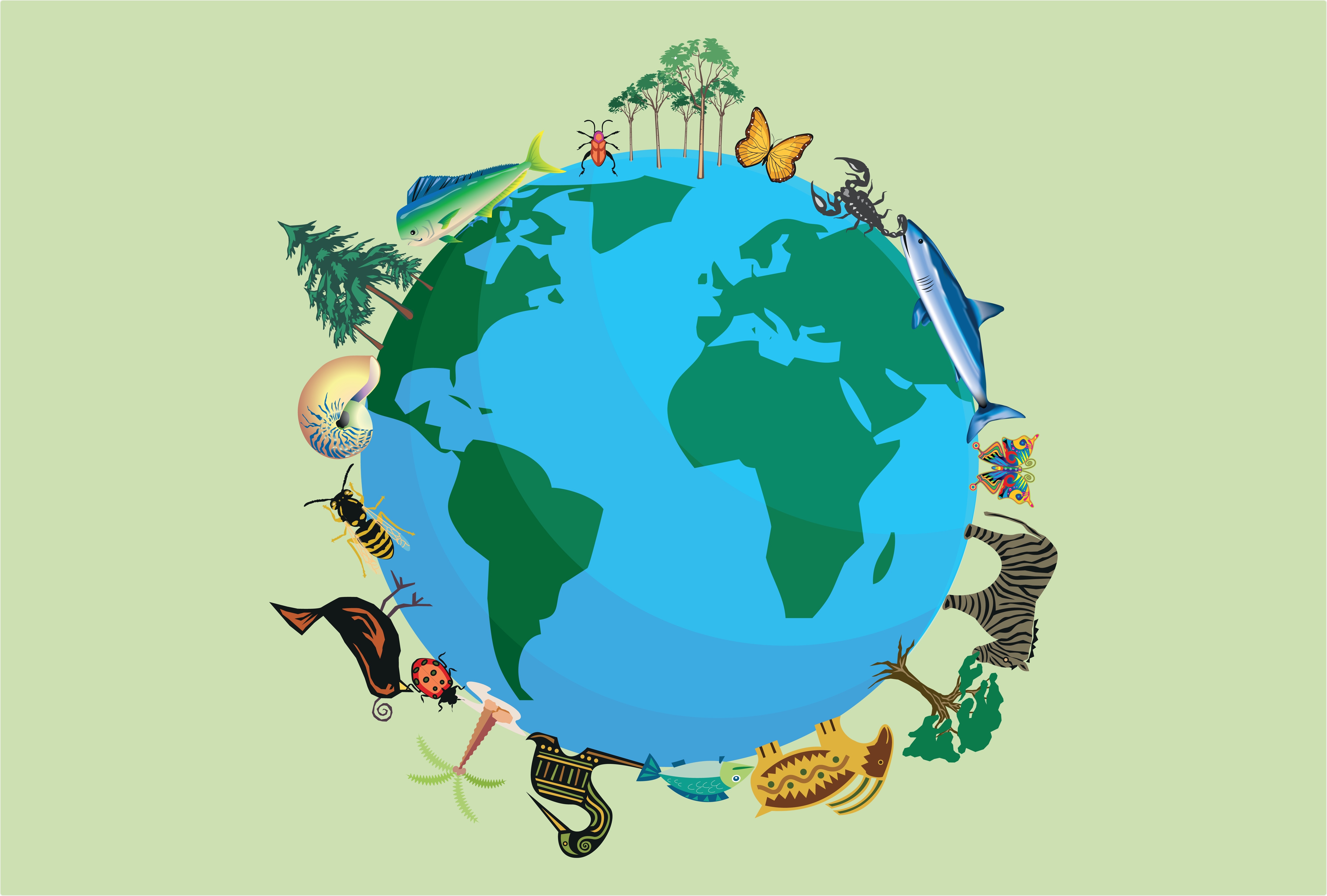In this interview, AZoLifeSciences speaks to Professor Parwinder Kaur about her latest research that uses genomic analysis for the conservation of koalas.
Please could you introduce yourself and tell us about your expertise within DNA and genetics?
I have established a Translational Genomics research program that aims to translate fundamental science into ready-to-use solutions across the agricultural, environmental and medical sectors. My DNA Lab team enables research to span the spectrum of scientific activities beyond the traditional ‘Lab-to-Landscape’ model.
Our work has been pioneering new molecular tools for 3D-genomics with the DNA Zoo solving the long-standing genome assembly puzzle towards genomic empowerment for unique Australian biodiversity. With DNA Zoo Australia, my mission is to provide genomic empowerment to the threatened and endangered species facilitating conservation efforts with rapid and open access release of their genomic data.

DNA. Image Credit: vitstudio/Shutterstock.com
How have you adapted and used technologies like 3D genomics in your research?
I started this journey working with the key Australian pasture sub-clover genome which proved to be my lucky clover in terms of learning ground for one of the most pressing problems of putting the DNA puzzles together in a meaningful way for translational downstream research and applications. I was fascinated to apply these technological advancements across a wide range of fields including plant protection agricultural and environmental biotechnology, plant breeding, immunology, genomics, genetics, diagnostics & computational biology – both as an academic and entrepreneur.
With DNA Zoo Australia, I have been facilitating comprehensive sampling of Australasian biodiversity, including vulnerable and threatened species using rapid next-gen genomics and supercomputing.
I strongly believe that the availability of these missing DNA data links will shape the development of evolutionary studies and the understanding of extinction risk for Australian mammal species to provide critical information for making sound policy and management decisions.
One of the most fascinating facts about koalas is that their diet consists of highly toxic eucalyptus which would be fatal to most other animals. How have you used genetic analysis of the koala to understand its co-evolution with the native eucalyptus?
This work was led by the Koala Genome Consortium, comprised of 54 scientists from 29 different research institutions across seven countries. The consortium found that koalas have an expanded ‘bitter taste’ repertoire of 24 genes, the most of any Australian marsupial.
Bitter taste receptors recognize structural toxins (such as terpenes, phenols, and glycosides which are found in high levels in Eucalyptus), so this would allow them to optimize their leaf choice by targeting nutrients and minimizing toxins.
Another aim of this genomic analysis is to use it for the development of better vaccines for common diseases. Which diseases affect the koala population and how will vaccination be implemented to protect the koalas?
Diseases like koala retrovirus (KoRV) and Chlamydia are real issues towards the conservation of these Koalas. This chromosome length genome assembly enables a highly detailed 3D view of the genome architecture for Koala, karyotype evolution studies, identification of new genome linked markers, and how the overall structure of genes evolve from a zoonotic point of view?
The long-term survival of the koala is significantly threatened by disease, so characterizing the immune system of the koala is important for management. This will offer further insights into the species’ genetic susceptibility to diseases like koala retrovirus (KoRV) and Chlamydia, the basis for innovative vaccines, and facilitate new conservation management solutions that incorporate the species’ population and genetic structure, such as facilitating gene flow via habitat connectivity or translocations.

Koala. Image Credit: Richard A Wall/Shutterstock.com
In 2019-2020, devastating bushfires had hugely detrimental outcomes for Australia’s wildlife and wildfires are due to become even more frequent and damaging as climate change progresses. Koalas are particularly at-risk during bushfire season – why is this and how could your work support populations that have been devastated by these fires?
Koalas are super cute, cuddly, and fluffy yet very territorial wild species. The animals are particularly vulnerable to bushfires due to their slow movements and the flammability of eucalypt trees. The koala instinctively seeks refuge in the higher branches, where it is vulnerable to intense heat and flames.
Bushfires also fragment the animal's habitat, which restricts their movement and leads to population decline and loss of genetic diversity.
How will your research improve the genetic diversification of koalas?
The availability of this high-quality genetic data research is facilitating the projects on Kangaroo Island which involve expanding the genetic diversification of koalas and restoring their habitat following the 2019 bushfires.
How can genomic analysis be used to aid conservation efforts and improve biodiversity in other species across the world?
DNA Zoo Australia regularly partners with conservation bodies, zoos, and many other collaborators across Australasia to collect, sequence, and analyze genomes that could help Australian species by better understanding their genetic diversity bottlenecks for better breeding programs and population genetic analyses critical for conservation needs.

Biodiversity. Image Credit: Monphoto/Shutterstock.com
The COVID-19 pandemic has shed light on the wildlife trade and how the exploitation of wildlife has knock-down effects on the entire world, including the human population. In light of this and climate change, why is conservation and preservation of biodiversity so important right now?
Our planet is going through the sixth mass extinction and globally over a quarter of known species are threatened with extinction. The rate of species extinctions is accelerating, with grave impacts on people around the world.
The essential, interconnected web of life on Earth is broken by these losses. This loss is a direct threat to human well-being in all regions of the world and the current COVID pandemic and several wildfires across the globe are initial warnings to humanity.
Our planet is going through the sixth mass extinction and globally over a quarter of known species are threatened with extinction."
You currently work as the director for the DNA Zoo in Australia. What is the aim of the DNA Zoo and what research are you currently carrying out?
Australia is home to around 320 native, land-based species. We have the worst modern-day mammal extinction record of any country on Earth, with 34 species lost forever. DNA Zoo Australia regularly partners with conservation bodies, zoos, and many other collaborators across Australasia to collect, sequence, and analyze genomes that could help save Australian species.
In the first two founding years, DNA Zoo Australia has generated genomic resources for several key Australian species. This data legacy will serve for generations to come and will continue to pave the way for conservation studies, species evolution, and identify measures that will aid in the protection and understanding of the impact of fast-changing climates and habitats.
DNA Zoo Australia - Koala Genome release feature on ABC News!
Throughout your career, you have made incredible contributions to the biotechnology sector and have received many awards for your research. What has been the proudest achievement during your career?
My greatest professional achievement so far has been the recent journey from “Bench to Boardroom” as the Co-Founding director & Chief Science Officer with the launch of my first startup “ExPlanta Pty Ltd”. It is an amazing feeling to see your decade-long science experiments and outcomes taking shape into a product that will serve humanity and is an environmentally friendly solution to the current food, biodiversity, and climate crisis we are facing.
I am very grateful for Ex Planta co-founder Mr. Stockley Davies and all investors to believe in science and helping take the work from lab to landscape.
With this, I would like to say Biotechnology represents an opportunity to turn our future around. Problems are many, time is short so let’s get together, collaborate, break the barriers and make this world a better place to live.
I strongly believe “If biodiversity fails, we all fail”.
Where can readers find more information?
About Professor Parwinder Kaur
Dr. Parwinder Kaur leads an innovative Translational Genomics research program that aims to translate fundamental science into ready-to-use solutions across the agricultural, environmental and medical sectors. Her DNA Lab team enables research to span the spectrum of scientific activities beyond the traditional ‘Lab-to-Landscape’ model. Her work is pioneering new molecular tools for 3D-genomics with DNA Zoo solving the long-standing genome assembly puzzle towards genomic empowerment for unique Australian biodiversity. With DNA Zoo Australia she is on a mission to provide genomic empowerment to unique Australian biodiversity facilitating conservation efforts for the threatened and endangered species.
She has made substantial contributions to the field of biotechnology and was appointed as UWA “Be Inspired” for Agricultural & Environmental Biotechnology in 2019. Her studies tracking genomic variation to breed low methanogenic forages in Australia provided a new paradigm for reducing the environmental footprint of ruminants. She has been honored by the prestigious “Science and Innovation Award” for Young People in Agriculture, Fisheries, and Forestry by the Australian Academy of Sciences in 2013. For DNA Zoo innovative work developments won Microsoft's AI for Earth award for 2019-20. Dr. Kaur has been selected among the top 60 Superstars of STEM in 2020 with Science & Technology Australia.
Her multidisciplinary work has been pioneering on the front line of innovations with novel solutions for translational science and is therefore attracted significant public and media interest. Dr. Kaur is a passionate science communicator. She embraces every opportunity to talk about research to a general audience and has been of significant interest to outlets like SBS, ABC, and Prime Asia TV, where the intersectionality of Kaur’s gender and cultural origins are of notable pride. Dr. Kaur is motivated to help solve the worlds’ biggest problems with science and is determined to bring STEM into everyday life through compelling and effective science communication.
A budding entrepreneur in the fastest-growing Biotechnology sector with the recent launch of the first industry disruptor proof-of-concept pioneer model Ex Planta Pty. Ltd. She is an active mentor for gender equity, a Women in Technology WA Role Model, and GirlsXTech international ambassador working to close the gender gap in technology.